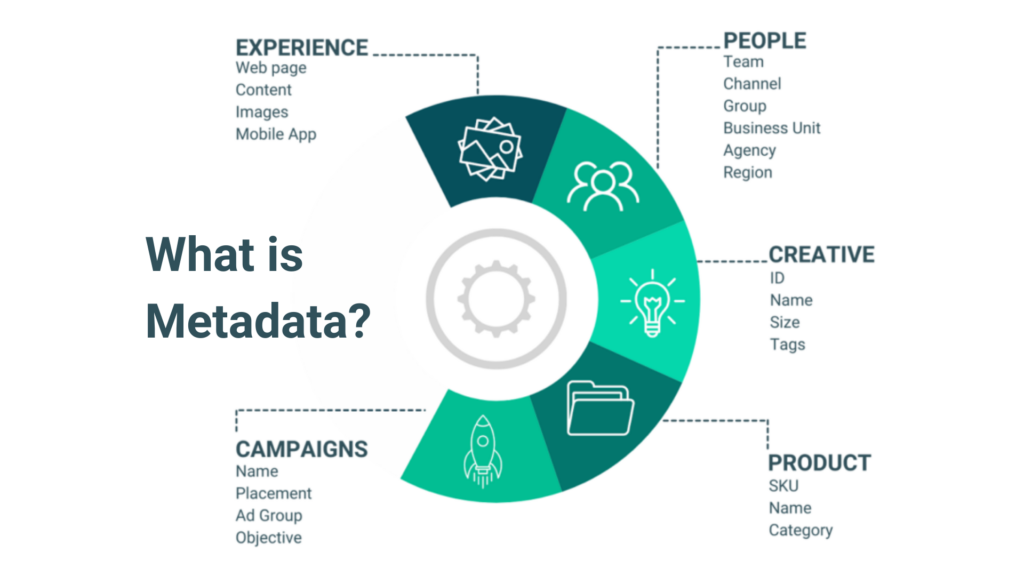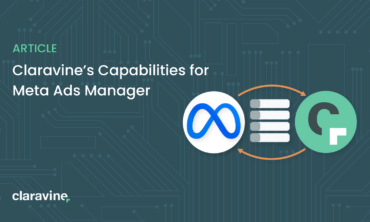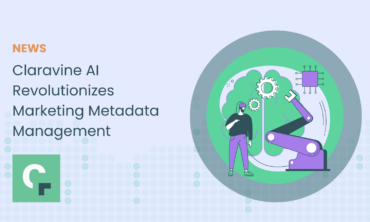Overcoming the Challenges of Scaling Generative AI in the Enterprise
Generative AI is ushering in a new era of possibility for enterprise marketers — and increasing the urgency to solve long standing challenges.
GenAI promises a fast, efficient path forward to meet the ever-increasing demand for personalized content. But as enterprise marketers understand, managing large volumes of content assets across complex systems is no simple task.
Tagging, tracking, serving, and measuring content across its lifecycle is already a significant roadblock to optimizing campaign performance. According to our latest State of Modern Marketing Data Standards report, only 13% of advertisers were very confident in their ability to tie campaign performance or ROI back to specific ad creative.
With an influx of AI-generated content on the horizon, marketers have zero time to waste.
Without a better approach to scaling content management, enterprise orgs will struggle to ensure the quality of their content and the accuracy of their campaign execution, support increased personalization, and keep pace with reporting needs.
Read on for a deep dive: where we stand today, the risks that lie ahead, and the role AI will play in creating — and solving — these unique challenges.
Tomorrow’s AI-generated content will amplify today’s challenges
As we stand today, the lifecycle of enterprise content is already rife with liabilities and potential breaking points, including:
- Different teams handle distinct stages of the content supply chain, from planning and budgeting to designing and building digital experiences to activation and analytics.
- Campaign plans and content assets go through repeated handoffs across multiple business units, brands, agency partners, and consultants.
- These teams all work within a tangled technical network of system integrations between DAMs, project management tools, email providers, ad servers, social platforms, cloud data storage, and analytics tools.
In order for enterprise marketers to track and manage content throughout these complex processes, they need to capture and understand consistent content metadata — the data surrounding every asset, behavior, and campaign.

But the traditional approach to manually implementing metadata isn’t enough for the modern enterprise. Different systems use inconsistent fields. Teams can easily misinterpret or misapply naming conventions. And human error is unavoidable, especially when trying to achieve standardization across the volume of content created within the enterprise.
Now, imagine enterprise content powered by GenAI. As content creation scales by an order of magnitude, so does the challenge of manually managing all that metadata.
If today’s campaigns require enterprise orgs to manage dozens of content variations, tomorrow’s will include hundreds or even thousands. That means more content stored in DAMs, more ad variations, and more dynamic fragments within experiences — all ready to localize, personalize, and serve up to increasingly segmented audiences.
Already, our research shows that two in five enterprise marketing teams are already using AI for ad creative. But only 22% of enterprise marketers are very confident in their ability to tag and track assets created by AI.
That’s a problem. More AI-generated content — without reliable metadata to track and manage it — will only bring new challenges.
Challenge #1: Brand safety and content quality
Using GenAI to produce content requires careful guardrails to prevent misalignment with brand guidelines — and avoid jeopardizing brand safety.
We discussed this very topic in a recent MarTech webinar on the future of AI and marketing data. As our Product Manager focused on AI said, “The use of AI to generate content can lead to results that aren’t necessarily aligned to your brand or company. This could be something as small as not aligning to a brand standard around color or font. Or it could be as severe as results that aren’t even brand safe.”
Especially in regulated industries with stricter compliance requirements, marketers need to have full confidence that their AI-generated content meets the highest quality standards. Typically, that requires tracking and verifying that every asset goes through the proper review and approval channels before reaching consumers.
And if any content asset does fail to meet brand standards, teams need to be able to immediately flag it and prevent it from being used — across every campaign, partner, system, and platform.
Challenge #2: Mismanaged dynamic fragments
Marketers can now deliver increasingly personalized experiences thanks to dynamic fragments — modular pieces of content that are personalized and adapted in real-time, based on user data and behavior, and assembled in different configurations.
Dynamic fragments offer more flexibility to marketers by allowing them to segment and target audiences with customized messaging or visuals based on factors like the user’s location, browsing history, device type, or engagement patterns.
But the flexibility of dynamic fragments brings about even more complexity, since they multiply the possible combinations of content that a user can experience. And without clear and consistent metadata around what content appears in which permutations of dynamic fragments, teams won’t be able to understand, validate, and measure the success of their content and campaigns.
Challenge #3: Breakdowns in complex campaign execution
Enterprise media and execution teams already have a difficult job: showing the right content to the right audience across a very complex content supply chain.
But advertisers estimate that the wrong creative is served to the wrong audience 25% of the time (and that percentage only increases for agencies).

During our panel on data standards at Advertising Week New York, EssenceMediaCom’s VP of Global Data Management Tim Fogarty discussed experiencing this particular challenge firsthand. “Every ad server thinks I speak Spanish, and I do not speak Spanish. I get a lot of those ads, and it’s because no one’s checking and doing that due diligence. It requires a duplication of effort and a healthy bit of distrust that we don’t always want to acknowledge has to exist to be successful in the space, but we need to do it.”
As generative AI increases the volume of content marketers manage, and enhances their ability to personalize messaging, this work is only going to get harder. Media teams will need extremely detailed metadata and accurate reporting to correctly target, route, and serve the right content to the correct audience.
Challenge #4: Slow or inaccurate analytics
Most enterprise orgs think about adopting GenAI tools to speed up content creation. But unless that new content includes consistent metadata that’s free of manual errors, teams will encounter significant bottlenecks and delays around analytics.
Currently, only 16% of advertisers report being very confident in their ability to tie campaign performance and ROI back to specific data sets. And seven in 10 say it can take up to three days to reformat data and reports necessary to evaluate campaign performance.
For enterprise teams, even incremental optimizations in campaign performance can make a huge impact on ROI. Waiting days for data is already costly. And as GenAI adds more complexity, these analytics could potentially get much harder and much slower.
As our Chief Growth Officer Chris Comstock said in our recent webinar, “Measurement teams have been trying to understand and optimize against ten or twelve different tests or experiences. Now, they’re trying to make sense of anywhere from hundreds to thousands of experiences. Getting that data right and getting those inputs right across the content supply chain is becoming even more critical.”
The solution: automated data standards
If GenAI is adding complexity and urgency to the existing challenge of implementing consistently reliable metadata, where can enterprise marketers look for a solution? Ironically, to AI itself.
Intelligent automation now makes it possible to apply consistent metadata across enterprise content. Through advanced analytic functionalities and new approaches like creating unique content IDs and using content comprehension, enterprises can now maintain a playbook for all metadata, all the time.
Creating content IDs
For decades, marketing teams have relied on manual naming conventions to handle the metadata associated with campaigns and assets. But as we discussed earlier, this hand-crafted approach often leads to discrepancies and errors as data circulates through various teams, platforms, and systems.
Now, a new strategy has emerged: replacing naming conventions with content IDs.
Why are IDs like a content ID so important? They provide a unique key for your team to use to create relationships between the different datasets you want to connect – ensuring that the campaign metadata you create and capture can be easily linked back together in your analytics and BI tools.
And now, AI-powered technologies can generate automated content IDs by analyzing visual and textual content to create unique identifiers for each asset. These content IDs are robust and consistent tags that function and persist across all platforms, ensuring that each piece of content can be uniformly recognized and managed from planning to campaign execution to analytics.
With automated content IDs, enterprise marketing teams can literally speak the same language and track content performance throughout the organization.
Automating the tagging of assets with content comprehension
The visual media that enterprises deploy across campaigns is, essentially, unstructured data. And new AI models are now capable of classifying and labeling that data at scale.
Through content comprehension, AI can now:
- Detect and understand what’s visually occurring within a video or image
- Look at and read text on screen
- Understand the language spoken in audio components
This means that content comprehension enables enterprise teams to scale data labeling with AI. With highly detailed tagging, teams can easily search for existing content assets and uncover meaningful insights. This granular level of tagging and discovery will help teams reduce duplicative content creation efforts, understand exactly what kind of content resonates with targeted audiences, and optimize the performance of future campaigns accordingly.
Having a playbook for all metadata across the content supply chain
Ultimately, AI makes it possible for enterprise marketing orgs to increase the scale of content metadata.
With automation, teams can classify, label, tag, categorize, and organize content with a level of specificity and reliability that manual processes could never achieve. And with that consistent taxonomy, teams can properly tag and track unique creative iterations, surface granular insights, and improve data governance.
Bottom line: automated metadata across the content lifecycle can be used to optimize creative for better campaign performance and improved ROI. And today’s forward-thinking teams are already adopting Claravine’s AI-powered data standards platform to realize the full benefits of automated, consistent metadata at scale.
Ready to learn more? Get in touch with our team.



